This article was co-authored by Indy Chabra, MD, PhD. Dr. Indy Chabra is a Board Certified Dermatologist and a Board Certified Mohs Micrographic Surgeon. He is the Founding Member of DMC Dermatology & Mohs based in Tucson, Arizona. With over 15 years of experience, he provides medical, surgical, and cosmetic dermatology care for adult and pediatric patients. Dr. Chabra earned a BS in Chemistry and Biological Sciences and an AB in Economics from Stanford University. He also received his MD and PhD in Microbiology and Genetics from Stony Brook University. He completed his Dermatology residency at the University of Pittsburgh Medical Center (UPMC), Pittsburgh. While at UPMC, Dr. Chabra received extensive training in complex Medical Dermatology, hair and nail conditions, Pediatric Dermatology, Cosmetic Dermatology, and Mohs Skin Cancer Surgery. Dr. Chabra is a Fellow of the American Society for Mohs Surgery, a Fellow of the American Academy of Dermatology, and a Fellow of the American Society for Dermatologic Surgery. Dr. Chabra also provides in-patient Dermatology consults at Tucson Medical Center.
There are 9 references cited in this article, which can be found at the bottom of the page.
This article has been viewed 47,110 times.
Ringworm, also called tinea, is a common fungal infection that can appear on your face, body, nails, or scalp. The raised rings created by the fungus can be both unsightly and painful. It’s best to leave ringworm uncovered for maximum healing, but there are a few ways to conceal it if necessary. Applying a loose bandage to the infected area is one option. You can also very carefully apply makeup to the infected skin. However, make sure that you are working with your doctor to treat the ringworm to get rid of the infection as soon as possible.[1]
Things You Should Know
- It may be embarrassing, but using an anti-fungal cream and letting the affected skin breathe uncovered is going to be the fastest way to heal![2]
- Covering the ringworm with a bandage or makeup may seem like a logical choice, but that can lock in moisture and slow down the healing process.
- If you do use makeup, you absolutely must sanitize any brushes after you’re done since ringworm is contagious and it might stick around on any tools you use.
Steps
Concealing Your Ringworm
-
1Wrap a scarf around your upper scalp. If the ringworm is present at the top of your face, forehead, or hair line, it might be possible to hide it with a scarf or headband. Stand in front of the mirror and practice positioning the scarf on your head. When you get it positioned, pin it down with bobby pins to hold it in place.[3]
- Be warned, however, that covering ringworm with fabric can sometimes make it itchy.
- You’ll also need to regularly wash the scarf or headband or risk spreading ringworm elsewhere.
-
2Apply a loose-fitting bandage to the infected area. If you have a ringworm patch on your face and must cover it, get an adhesive bandage that's large enough to cover your patch. Then, carefully place the bandage on to your face. Replace this bandage as often as possible to prevent the accumulation of moisture.
- Wash your hands both before and after handling the bandages to prevent spreading your ringworm.
- Make sure that the bandage fully covers the raised skin, otherwise you risk irritating the infected area.
Advertisement -
3Leave it uncovered as often as possible. This is actually the best possible way to allow your skin to heal. If you cover your ringworm with bandages or makeup, you run the risk of suffocating the skin and spreading the infection. The moisture held against the skin can also slow down the healing process.[4]
- For example, if your ringworm was located on the lower body, it would be advisable to wear loose-fitting clothing to allow for air circulation.
Hiding Ringworm with Makeup
-
1Talk with your doctor before applying makeup to your ringworm. Most dermatologists will not suggest applying any product to your skin when it is infected. However, if you must cover your ringworm, a doctor can offer suggestions regarding how to do so safely. It’s especially important that you wash your hands in hot water and soap after every time you touch the infected area.
- In addition, any tools that you use to apply the makeup, such as brushes, and the makeup itself can continue to spread ringworm if precautions are not taken.
-
2Apply a moisturizer primer or face cream on to your skin. Place a few drops of an oil-free product on your fingertips and rub it into the non-infected skin. Keep going until the product is no longer visible and your skin looks hydrated. Lastly, repeat this same process with the area infected by ringworm, taking care to touch no other part of your face.[5]
- Don’t touch the bottle to apply the cream to your ringworm. Instead, squeeze a bit on to a tissue and dip your fingers into this. Then, toss the tissue. Use this same method for other steps.
-
3Rub concealer on to your face using your fingertips. Put a few drops of concealer on to a piece of tissue. Then, dip your fingertips into the concealer and dot it on your face. Rub the concealer in until it is blended. Finish by dabbing concealer on to the ringworm areas. Blend until smooth.[6]
- It’s best to choose a concealer, foundation, and powder that closely matches your skin tone. If you are worried about redness, you can get a concealer with a green undertone.
- Using your fingertips to apply the concealer actually helps to create a smoother finish, as your body heat somewhat liquefies the makeup.
- You may need to apply more than 1 layer of concealer depending on how much coverage you want.
-
4Cover your face in foundation using a brush. Pour a bit of foundation on to a fresh tissue. Dip your makeup brush into the foundation and dab it on to your skin. Continue until your skin is covered and smooth. Apply foundation to your ringworm area last and immediately sanitize your brush afterwards.[7]
- You can sanitize your brush by soaking it in bleach and hot water. Make sure that this will not damage your brush by checking with the manufacturer.
-
5Remove makeup carefully using wipes. If your skin will tolerate it, use makeup remover wipes at the end of each day. Use a separate wipe for each area with ringworm and throw it immediately away afterwards. If you use a washcloth to clean your face, you must use a separate one for any infected areas.[8]
- You must sanitize any washcloths used by washing them in hot water after each use. Otherwise, you risk re-infection.
- Don’t scrub your face roughly when removing the makeup or you risk irritating the skin further and possibly creating a secondary infection.
Treating Your Ringworm
-
1Take a prescription antifungal medication for up to 8 weeks. If you suspect that you have ringworm, it’s important to reach out to your doctor as soon as possible.[9] Ringworm can spread from your face to other areas. You’ll be prescribed an oral antifungal medication that will gradually kill off the infection and make it less likely to spread.[10]
- Make sure to take the full course of your medication. If you quit it early, then the infection can return.
- Your doctor might also recommend a topical antifungal cream or lotion. Follow their directions for application.[11]
- Griseofulvin is the most commonly prescribed ringworm medication. You can take it along with high-fat foods, such as ice cream, to increase absorption and effectiveness.
-
2Use an antifungal shampoo for up to 8 weeks. If your ringworm is anywhere near your hair line, your doctor will likely suggest an anti-fungal shampoo. Any over-the-counter shampoo with selenium sulfide will work. Twice a week apply the shampoo when showering. Keep it on your scalp for 10 minutes after lathering and then rinse.[12]
- Some doctors will suggest using fungal shampoo to prevent the spread of ringworm into your hair, even if it is currently just on your face.
-
3Seek additional treatment if you develop swelling around the ringworm. A tender, lumpy bump called a kerion can be a sign that you are experiencing an allergic reaction to the ringworm fungus. Kerions often develop on the scalp, including the edges of your face. Talk with your doctor about treating a kerion with oral steroids in order to minimize hair loss.[13]
- Depending on the size of the kerion, your doctor may have to lance it to drain the pus. If this is the case, you will not be able to apply makeup or other cosmetic products to the area until it is fully healed.
Expert Q&A
-
QuestionWhat can be mistaken for a ringworm?
 Indy Chabra, MD, PhDDr. Indy Chabra is a Board Certified Dermatologist and a Board Certified Mohs Micrographic Surgeon. He is the Founding Member of DMC Dermatology & Mohs based in Tucson, Arizona. With over 15 years of experience, he provides medical, surgical, and cosmetic dermatology care for adult and pediatric patients. Dr. Chabra earned a BS in Chemistry and Biological Sciences and an AB in Economics from Stanford University. He also received his MD and PhD in Microbiology and Genetics from Stony Brook University. He completed his Dermatology residency at the University of Pittsburgh Medical Center (UPMC), Pittsburgh. While at UPMC, Dr. Chabra received extensive training in complex Medical Dermatology, hair and nail conditions, Pediatric Dermatology, Cosmetic Dermatology, and Mohs Skin Cancer Surgery. Dr. Chabra is a Fellow of the American Society for Mohs Surgery, a Fellow of the American Academy of Dermatology, and a Fellow of the American Society for Dermatologic Surgery. Dr. Chabra also provides in-patient Dermatology consults at Tucson Medical Center.
Indy Chabra, MD, PhDDr. Indy Chabra is a Board Certified Dermatologist and a Board Certified Mohs Micrographic Surgeon. He is the Founding Member of DMC Dermatology & Mohs based in Tucson, Arizona. With over 15 years of experience, he provides medical, surgical, and cosmetic dermatology care for adult and pediatric patients. Dr. Chabra earned a BS in Chemistry and Biological Sciences and an AB in Economics from Stanford University. He also received his MD and PhD in Microbiology and Genetics from Stony Brook University. He completed his Dermatology residency at the University of Pittsburgh Medical Center (UPMC), Pittsburgh. While at UPMC, Dr. Chabra received extensive training in complex Medical Dermatology, hair and nail conditions, Pediatric Dermatology, Cosmetic Dermatology, and Mohs Skin Cancer Surgery. Dr. Chabra is a Fellow of the American Society for Mohs Surgery, a Fellow of the American Academy of Dermatology, and a Fellow of the American Society for Dermatologic Surgery. Dr. Chabra also provides in-patient Dermatology consults at Tucson Medical Center.
Board Certified Dermatologist Very often someone who says they come in with ringworm, it's actually not ringworm but instead it's nummular eczema. Nummular means coin shaped. Eczema is when your skin gets dry, it breaks down, anything from outside irritates inside.
Very often someone who says they come in with ringworm, it's actually not ringworm but instead it's nummular eczema. Nummular means coin shaped. Eczema is when your skin gets dry, it breaks down, anything from outside irritates inside. -
QuestionHow do I check myself for ringworms?
 Indy Chabra, MD, PhDDr. Indy Chabra is a Board Certified Dermatologist and a Board Certified Mohs Micrographic Surgeon. He is the Founding Member of DMC Dermatology & Mohs based in Tucson, Arizona. With over 15 years of experience, he provides medical, surgical, and cosmetic dermatology care for adult and pediatric patients. Dr. Chabra earned a BS in Chemistry and Biological Sciences and an AB in Economics from Stanford University. He also received his MD and PhD in Microbiology and Genetics from Stony Brook University. He completed his Dermatology residency at the University of Pittsburgh Medical Center (UPMC), Pittsburgh. While at UPMC, Dr. Chabra received extensive training in complex Medical Dermatology, hair and nail conditions, Pediatric Dermatology, Cosmetic Dermatology, and Mohs Skin Cancer Surgery. Dr. Chabra is a Fellow of the American Society for Mohs Surgery, a Fellow of the American Academy of Dermatology, and a Fellow of the American Society for Dermatologic Surgery. Dr. Chabra also provides in-patient Dermatology consults at Tucson Medical Center.
Indy Chabra, MD, PhDDr. Indy Chabra is a Board Certified Dermatologist and a Board Certified Mohs Micrographic Surgeon. He is the Founding Member of DMC Dermatology & Mohs based in Tucson, Arizona. With over 15 years of experience, he provides medical, surgical, and cosmetic dermatology care for adult and pediatric patients. Dr. Chabra earned a BS in Chemistry and Biological Sciences and an AB in Economics from Stanford University. He also received his MD and PhD in Microbiology and Genetics from Stony Brook University. He completed his Dermatology residency at the University of Pittsburgh Medical Center (UPMC), Pittsburgh. While at UPMC, Dr. Chabra received extensive training in complex Medical Dermatology, hair and nail conditions, Pediatric Dermatology, Cosmetic Dermatology, and Mohs Skin Cancer Surgery. Dr. Chabra is a Fellow of the American Society for Mohs Surgery, a Fellow of the American Academy of Dermatology, and a Fellow of the American Society for Dermatologic Surgery. Dr. Chabra also provides in-patient Dermatology consults at Tucson Medical Center.
Board Certified Dermatologist You can try to diagnose it at home, but the correct way is to go to a doctor. The professional will scrape the skin a little bit and look under the microscope to see if there's a fungal infection or not.
You can try to diagnose it at home, but the correct way is to go to a doctor. The professional will scrape the skin a little bit and look under the microscope to see if there's a fungal infection or not.
Warnings
- Never share personal items, such as brushes, as this can be a common way of spreading ringworm infections from person to person.[15]⧼thumbs_response⧽
References
- ↑ https://www.rch.org.au/kidsinfo/fact_sheets/Ringworm/
- ↑ Indy Chabra, MD, PhD. Board Certified Dermatologist. Expert Interview. 10 March 2022.
- ↑ https://www.gwinnettpeds.com/scalp-ringworm.php
- ↑ https://www.healthline.com/health/how-to-get-rid-of-ringworm#the-takeaway
- ↑ http://www.byrdie.co.uk/how-to-cover-up-scars
- ↑ https://www.prevention.com/beauty/concealer-makeup-tips-bobbi-brown
- ↑ http://www.byrdie.co.uk/how-to-cover-up-scars
- ↑ https://www.aad.org/public/diseases/contagious-skin-diseases/ringworm#treatment
- ↑ Indy Chabra, MD, PhD. Board Certified Dermatologist. Expert Interview. 10 March 2022.
- ↑ http://www.stanfordchildrens.org/en/topic/default?id=tinea-infections-ringworm-in-children-90-P01931
- ↑ Indy Chabra, MD, PhD. Board Certified Dermatologist. Expert Interview. 10 March 2022.
- ↑ https://www.gwinnettpeds.com/scalp-ringworm.php
- ↑ https://www.gwinnettpeds.com/scalp-ringworm.php
- ↑ https://kidshealth.org/en/teens/ringworm.html
- ↑ https://www.gwinnettpeds.com/scalp-ringworm.php


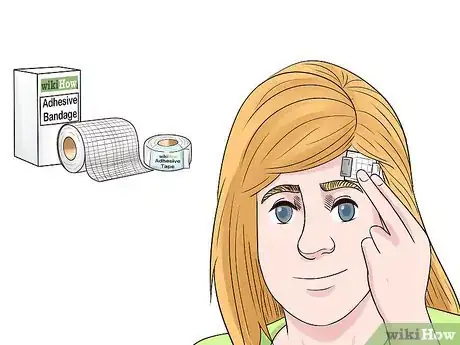



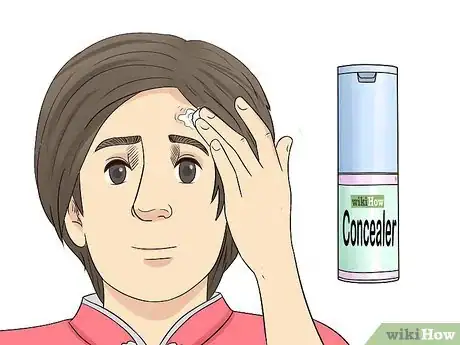
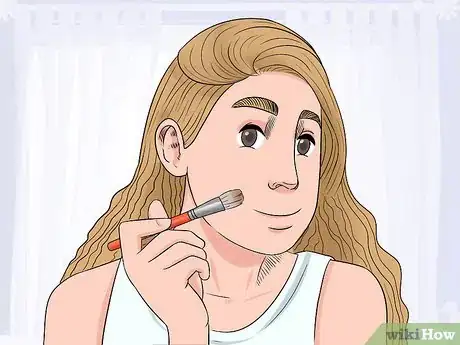
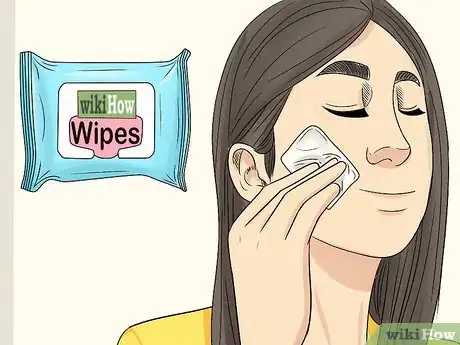









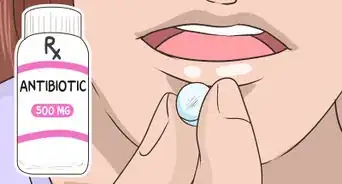
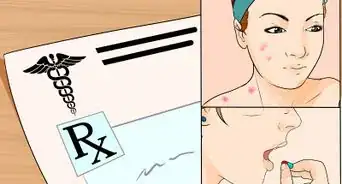















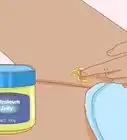



































Medical Disclaimer
The content of this article is not intended to be a substitute for professional medical advice, examination, diagnosis, or treatment. You should always contact your doctor or other qualified healthcare professional before starting, changing, or stopping any kind of health treatment.
Read More...